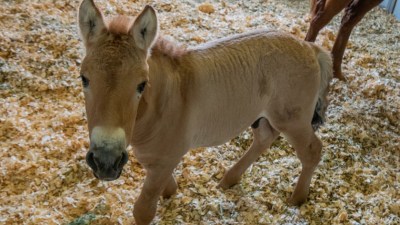We’re Cloning Animals From the “Frozen Zoo”; Like A Seed Bank But For Animals
Seed banks are facilities of great value to biodiversity and agriculture around the world. These facilities are used to house stocks of seeds of a wide variety, helping to maintain genetic diversity and avoid the permanent loss of various plant species. While there are some challenges, the basic requirements to run a simple seed bank are to keep a selection of seeds at low temperature and humidity to maximise their viable lifespan.
When it comes to animals, things become more difficult — one can’t simply plant an old seed in the ground and grow a fresh new meerkat, for example. Preservation of animal genetic material poses its own unique set of challenges — ones that the San Diego “Frozen Zoo” don’t shy away from. They’ve recently shown the viability of the program with the healthy birth of a ferret cloned from an animal that died in 1988.
Long-Term Storage
There are less than a dozen frozen zoos around the world, with the first being established at San Diego Zoo by Kurt Benirschke in 1972. While the available biological technology was limited at the time, it was hoped that by cryopreserving samples of animal tissues and reproductive material, they might later be used for research or reproduction purposes. The idea has since spread, with a smattering of other facilities opening up around the world. Such facilities necessarily store a wide variety of material, depending on the species in question. Obviously, viable gametes, or reproductive cells, are of high priority. Eggs and sperm cells from sexually mature animals can readily be secured from both live and deceased specimens, and used to produce embryos for implantation.
Alternatively, fluids such as blood or milk may be saved, as well as muscle tissue, bone, hair or skin samples. With cloning techniques pioneered in the 1990s, DNA extracted from these non-reproductive cells can be inserted into an egg with its nucleus removed. This egg can then be implanted in a surrogate mother like any other embryo, and the pregnancy carried to term. With in vitro fertilization (IVF) techniques in their infancy in the 1970s and cloning a distant blip on the horizon, Dr. Benirschke’s decision to establish the first frozen zoo at the time shows considerable foresight.

With decades of advancements in genetic sequencing and techniques like in vitro fertilization now available, these libraries of genetic material are starting to bear fruit. Although other species have already been successfully cloned, this is the first clone of a US endangered species — a black-footed ferret by the name of Elizabeth Ann. Born to a domestic ferret serving as a foster mother on December 10th of last year, her genes are a duplicate of a ferret named Willa who passed away in 1988 and was frozen at the San Diego facility.
The black-footed ferret has long been a focus of conservationists, who have been working to re-establish the species since it was thought to be extinct in the mid-20th century. When a dead specimen was found on a ranch in the 1980s, breeding work began in earnest, with thousands of ferrets reintroduced into the wild. As for Elizabeth Ann and any potential future clones, however, there aren’t yet plans to release them from captivity.
The Challenge of Genetic Diversity
Both breeding programs and cloning experiments highlight a limitation of this work, however. Genetic diversity is key to maintaining a thriving population over many generations, but the ferrets bred as part of the program all trace their lineage to just 7 individuals. Similarly, a cloning program can produce theoretically unlimited offspring from a single DNA sample, but inbreeding depression will make such a cohort unlikely to thrive in the long term. Thus, any frozen zoo aiming to serve as a potential backup against possible extinctions needs to collect as broad a spectrum of genetic samples as possible.

The San Diego facility has had other success stories, too. In partnership with Viagen, a company perhaps best known for offering cloning services for domestic pets, scientists were able to clone Kurt, a Przewalski’s Horse, from forty-year old frozen skin samples. Similarly to the methods used to create Elizabeth Ann, Kurt’s genetic material was used to fertilise an egg which was then implanted into a domestic horse serving as a surrogate mother. Sequencing revealed the donor tissue featured many unique genes not found in the currently-alive population, all of which come from lines of just 12 former individuals. It’s hoped that when Kurt comes of age, breeding with others will significantly increase the genetic diversity of the endangered species.
The need for similar species to carry pregnancies means that it’s unlikely we’ll see frozen zoos churning out wooly mammoths or Tasmanian tigers for some time yet. Having the genetic material alone isn’t enough; a suitably close living relation is key, along with the aforementioned need for genetic diversity if repopulation is the goal. However, the technologies and techniques that have been developed will be crucial to maintaining biodiversity of existing species well into the future, especially given that habitat destruction and other existential threats remain around the world. And, as science continues to progress, it’s likely that frozen zoos will be the first to invite you to see their new dodo exhibit in the future!
Post a Comment